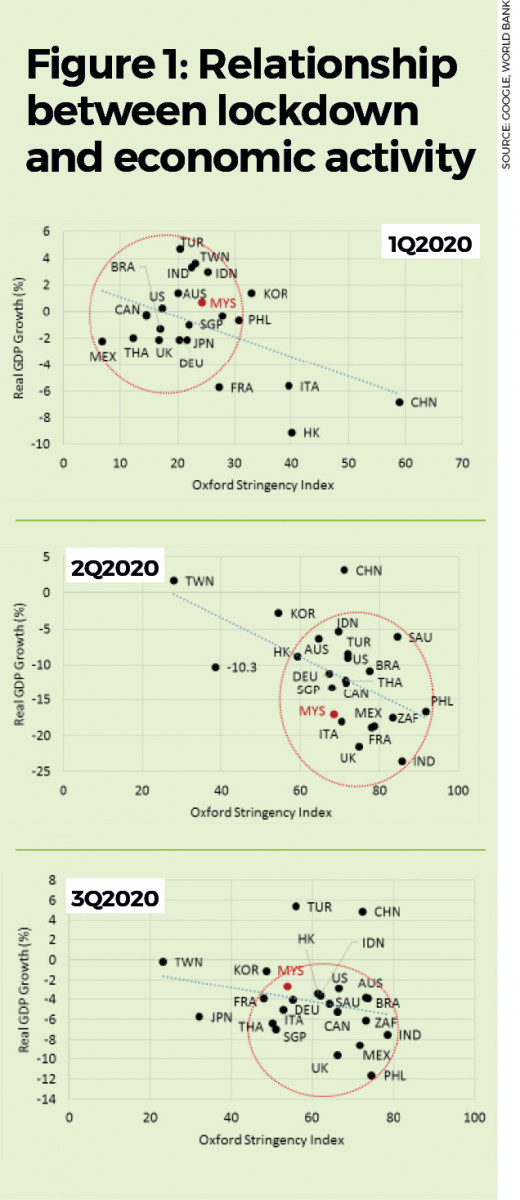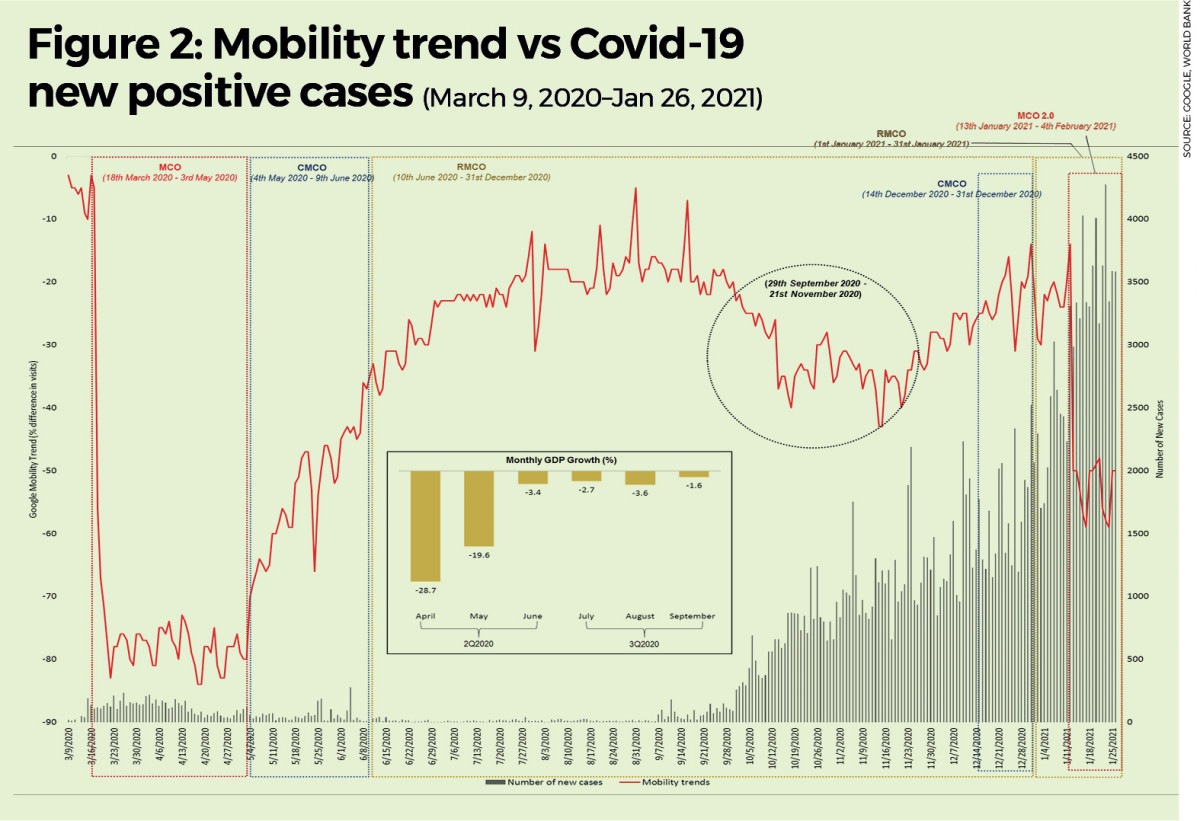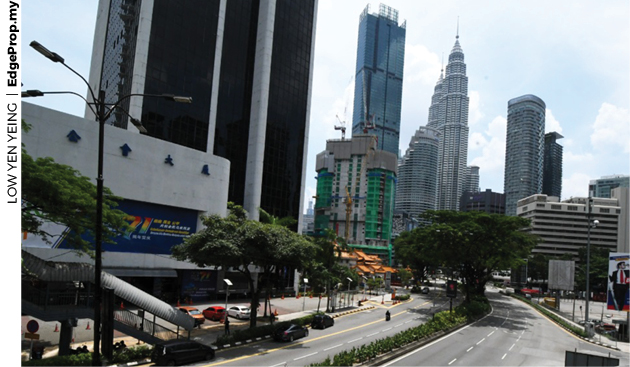
The Covid-19 outbreak is a global health crisis. However, the measures taken by countries across the world against this pandemic have brought along an unprecedented global economic recession.
In the absence of a vaccine or a treatment, countries have taken non-pharmaceutical interventions (NPIs) to mitigate the spread of the virus, such as border closure, reduction in non-essential services, forbidding crowd gathering, quarantine for areas with high number of cases, imposing mobility restriction and implementing lockdowns.
While such measures have effectively reduced health risks, they have also come with high economic costs.
Countries that have implemented more stringent NPIs have experienced sharper GDP (gross domestic product) contractions because of higher interruptions in travel and mobility and in normal business operations, which have led to lower consumption, declines in investment and breaks in supply chains; eventually causing losses of revenue, unprecedented high unemployment rates and contracted personal incomes.
The negative association between NPIs and economic activity is observed by plotting the Oxford Stringency Index — a composite measure based on nine response indicators including school closures, workplace closures and travel bans, rescaled to a value from 0 to 100 — against the real GDP growth over a sample of up to 23 emerging markets, and developing and advanced economies in separated quarterly periods (1Q, 2Q, and 3Q of 2020) (Figure 1).
During the period of 1Q20 where the imposed restriction measures were less stringent (mostly within the range of 10-30), the corresponding real GDP growth was around -2% to 5%. However, when the stringency index increased to a range of 60-80 in 2Q20, a negative growth in GDP as low as -20% was observed. Likewise, when the restriction measures among countries were loosened in 3Q20 (mostly within 50-80), the associated negative growth in GDP was moderated to -12%.
In the case of Malaysia, the full-scale lockdown or Movement Control Order (MCO) was first implemented from March 18 until May 12, 2020. While the MCO effectively brought down the daily new positive cases, the mobility trend — which is a proxy of economic activity — experienced a severe decline of more than 80% compared to the pre-MCO period (Figure 2). Correspondingly, a sharp decline in GDP (28.7%) was also observed in April 2020.
As soon as the restrictions were loosened with the implementation of Conditional MCO (CMCO) on May 13-June 9, there was a sharp increase in personal movements, leading to a smaller contraction of negative GDP growth (-19.6%) in May 2020.


More pronounced recovery was seen in economic activities during the even less stringent Recovery MCO (RMCO) period; especially from June to Sept 2020, when significant rebounds were observed in the GDP growth with -3.4%, -2.7%, -3.6%, and -1.6% in the respective months.
Since then, the virus outbreak has seemed to go out of control as the number of new positive cases started to increase drastically. Strict restrictions were absent throughout the months of Oct and Nov 2020, and the government only started bringing back the CMCO on Dec 14 2020; the result of which, of course, was not as effective as expected.
Though the implementation of MCO 2.0 on Jan 13, 2021 has successfully drawn down the mobility, there was no sign of decline in the number of new positive cases. Instead, the lockdown is deemed to produce headwinds to most of the economic sectors in 1Q21. Coupled with the general perception of uncertainty among consumers and investors, business decisions and operations are further affected; which will eventually prolong the overall economic recovery.
Nevertheless, the impact caused by MCO 2.0 is expected to be smaller than the one posed by the previous MCO in April 2020, due to the less stringent restrictions and a promised timeline of lockdown from the government.
This is evidenced by comparing the personal movement rate, where the average decline of mobility was 77% throughout the period of the first MCO; while during MCO 2.0, the average mobility decline is 53%. Besides, having been through the experience of lockdown before, firms and industry players are likely to be more adaptable and resilient. Most importantly, the likely rollout of vaccinations in early March 2021 should allow GDP to rebound in the second quarter.
Sectors that involve travel, entertainment, hospitality, cruises, etc are expected to continue to suffer due to the disruptions in business operations. However, as observed in June and July 2020, when the movement restrictions were lifted, the reopening of these sectors is likely to result in a strong reflexive bounce in output.
In the manufacturing and construction sectors, a small dip could happen owing to the recent spike of new positive cases among labourers in these sectors. The real estate sector, though it received a relatively lesser direct impact from the lockdown, will inevitably show a flattening performance following the affected consumers’ sentiment and the changing expenditure pattern.

The implication that one can draw from this episode is that lockdowns can only be effective if they are implemented in the early stage of the pandemic. If the lockdown is deployed in the later stage of the pandemic — when the number of cases is too large, so much so that even the sources of transmission are difficult to trace — the severity of the economic cost will outweigh the health cost it is trying to prevent.
Apparently, Malaysia has missed out its best timing in containing the second wave of the virus outbreak — which should have been in early Oct 2020. The delay in lockdown (MCO 2.0) has not only put the country’s healthcare system under pressure, but has also worsened both the economic and social consequences.
In fact, a lockdown is only suitable as a temporary intervention to curb the infection. It is definitely not a sustainable measure to battle the pandemic in the long run. This is because in the short-term, the economic costs induced by the lockdown could be compensated by the faster economic rebound once the restrictions are lifted — as what we have experienced in the first MCO.
In the long run, it is almost impossible for a country to keep on imposing lockdowns until the total eradication of the virus; not to mention there are signs showing the pandemic may likely turn into an endemic disease.
The resurgence of Covid-19 outbreaks seen in other countries like China, Germany, Iran, South Korea, Lebanon and Saudi Arabia indicates that there is a high likelihood that Covid-19 will be present in communities at all times, albeit at a lower level than it is now.
History has proven that it is incredibly difficult to eradicate a virus globally. It has only been achieved twice for major diseases of humans (smallpox) and animals (rinderpest). Even if we managed to eradicate Covid-19, there would likely be a long period before it disappeared entirely from the planet.
Also, there has been a shift in the policy recommendation at the international level towards self-imposed prevention measures, involving voluntary social distancing, mass usage of face masks, and self-movement-control practised by the people.

The logic behind this is that as people are self-motivated to take greater precautions against infecting others, the country may not require stringent lockdowns; and hence, coupled with the massive testing and contract tracing, the country could better withstand the impact of Covid-19 in the long run.
Speaking on sustainability, the importance of mass disease awareness in facilitating these self-imposed measures should not be overlooked. As observed, from Sept 29 to Nov 21, 2020, there was a significant decline in personal movement without any stringent government-imposed restrictions (as shown by the dotted circle in Figure 2).
This can probably be attributed to the high awareness among people who started practising self-imposed measures in response to the drastic increase of new positive cases. Unfortunately, such a mode was only sustained for a period of two months. Into the month of December, personal movement regained its momentum in tandem with the holiday celebrations. Otherwise, the magnitude of the following virus outbreak could have been reduced substantially.
One should realise that lockdowns were first proposed by the World Health Organization (WHO) merely as a temporary strategy to buy time for building up the fundamental medical and public health infrastructure in battling the pandemic.
Eventually, it is better for the government and public health institutions to mobilise people towards adopting self-imposed measures. In an environment where considerable disagreements exist between the optimal control measures to minimise infections and economic harm, self-imposed prevention measures that have a very limited impact on the economy but contribute very significantly to epidemic control are likely to play a substantial role in successfully tackling the pandemic in the long-run.
Dr Foo Chee Hung is MKH Bhd manager of product research & development
This story first appeared in the EdgeProp.my e-weekly on Feb 5, 2021. You can access back issues here.
Get the latest news @ www.EdgeProp.my
Subscribe to our Telegram channel for the latest stories and updates





